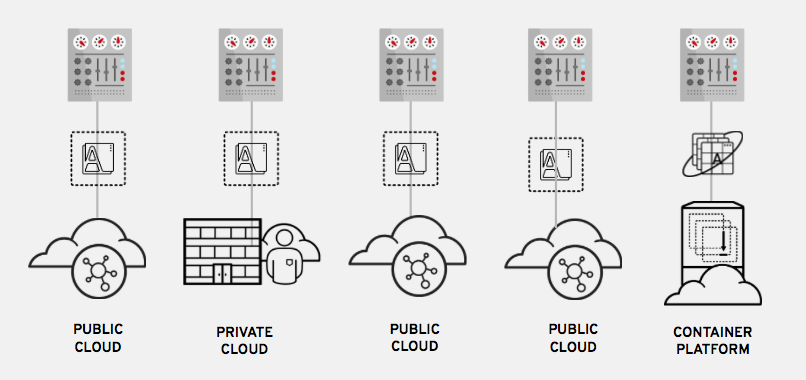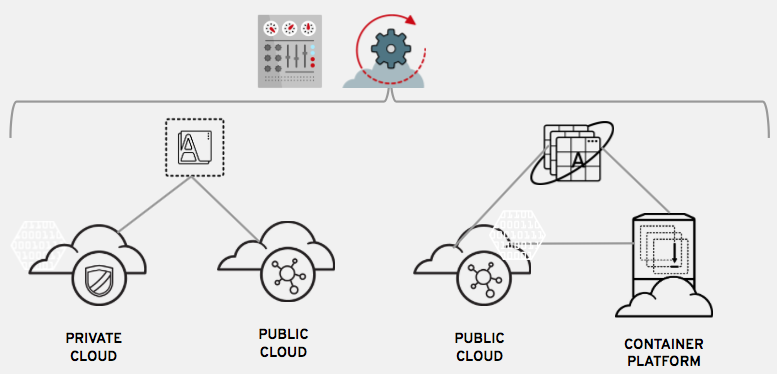3 Pitfalls Everyone Should Avoid with Hybrid Multicloud (Part 1)
The daily cloud hype is all around you, yet there are three pitfalls everyone should avoid.
From cloud, hybrid cloud, to hybrid multicloud, you’re told this is the way to ensure a digital future for your business. These choices you’ve got to make don’t preclude the daily work of enhancing your customer’s experience and agile delivery of those applications.
Let’s take a journey, looking closely at what hybrid multicloud means for your business. Let’s examine the decisions being made when delivering applications and dealing with legacy applications. Likely these are some of the most important resources to your business.
This article highlights three pitfalls everyone should be aware of when transitioning into hybrid multicloud environments. It’s based on experiences from interactions with organizations working to conquer hybrid multicloud while delivering their solutions.
Hybrid vs Multicloud
Defining the clouds we’re talking about should be our first step. It’s important that everyone understands the differences between multicloud, hybrid cloud, and hybrid multicloud. This gives a solid base for discussing the three pitfalls in the rest of this series.
Conversations around moving to the cloud can have many meanings, from taking your on premise computing capacity and turning that into your own private cloud. Providing developers with a cloud like experience with the same resources you already have. A more traditional expansion is to start making use of external computing resources, not those in your own data centers. These are the various public cloud providers and lead to our first definition,
multicloud.
Multicloud
Multicloud is literally using multiple clouds from multiple providers for multiple tasks.

Typically, multicloud refers to the use of several different public clouds with the goal of achieving greater flexibility, lowering costs, avoiding vendor lock-in, or using specific regional cloud providers.
One of the challenges of multicloud approach is achieving consistent policies, compliance, and management.
Multicloud is more of a strategy to expand your business while leveraging multi vendor cloud solutions spreading the risk of lock-in. Figure 1 shows the isolated nature of the cloud services being used, without any sort of coordination between the services and business applications. Each is managed separately and applications are isolated to services found in their environments.
Hybrid cloud approaches solves issues where isolation and coordination are central to the solution.
Hybrid cloud
Hybrid cloud is a combination of one or more public and private clouds with at least a degree of workload portability, integration, orchestration, and unified management.

The key here is that there is an element of interoperability, migration potential, and a connection between tasks running in public clouds and on-premise infrastructure, even if it’s not always
seamless or otherwise fully implemented.
If you’re missing the portability, integration, orchestration and management, then it’s just a bunch of clouds.
Figure 2 illustrates at least one private and pubic cloud. They can be off or on premise, but they have some degree of the following:
- interoperability
- application portability
- data portability
- common management
Pulling both of these together gives a hybrid multicloud, but what’s that look like?
Hybrid multicloud
Pulling together multiple clouds and providing the tools to ensure interoperability between the various services in your hybrid and multicloud solutions.

Bringing these together can be a serious challenge, but the end results ensures better usage of resources without isolation in their respective clouds.
Figure 3 showcases an example of hybrid multicloud where it all based on open technologies for interoperability, workload portability, and management.
Red Hat OpenShift Container Platform is deployed across private and multiple public clouds ensuring workload portability. Applications and data can be deployed easily on Microsoft Azure, AWS, on-premise virtualization, and the private cloud.
Red Hat CloudForms ensure a common management view across the entire ecosystem of applications, data, and infrastructure options. Red Hat Fuse together with 3Scale API management provide truly cloud agnostic integration for applications to interact with various cloud services. Cloud data was never easier than with Red Hat Gluster Storage solutions, backing any application across this hybrid multicloud.
Pitfalls everyone should avoid
In part two of this series, the first of three pitfalls is discussed. A pitfall that everyone should avoid with hybrid multicloud. Find out why cost is not always the obvious motivator when determining how your business is going to transition in to the cloud.
| Published on Java Code Geeks with permission by Eric Schabell, partner at our JCG program. See the original article here: 3 Pitfalls Everyone Should Avoid with Hybrid Multicloud (Part 1) Opinions expressed by Java Code Geeks contributors are their own. |





